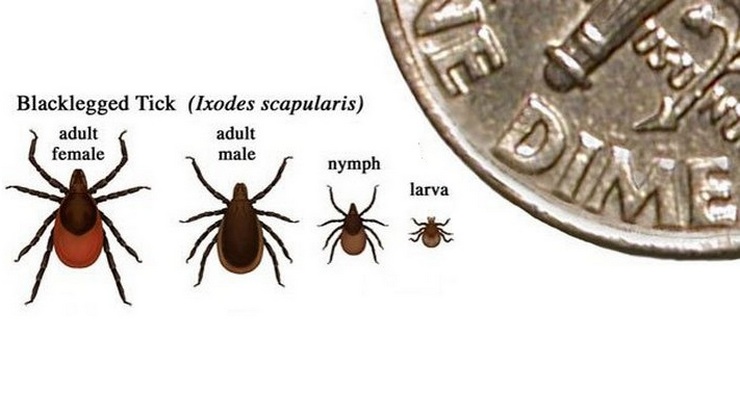
Lyme disease has spread throughout the entire United States, according to a new study, and the Pasadena Public Health Department says it is now cropping up here.
Pasadena has begun to see cases of the disease in small numbers, Pasadena Public Health Director Michael Johnson said.
“In Pasadena, Lyme disease cases are expected, though infrequent when compared to jurisdictions on the East Coast which see many more cases per year,” he explained. “Pasadena has around 1-2 confirmed Lyme disease cases among our residents per year.”
The bacterial infection is spread along the Pacific coast of the U.S. by the western black-legged tick (Ixodes pacificus).
The illness is making significant inroads in the Golden State.
“Florida and California — states not historically associated with Lyme disease — had 483 and 501 positive test results in 2017, respectively,” a report by the clinical laboratory company Quest Diagnostics reveals. “Compared to 2015, this represents a 77-percent increase in disease occurrence for Florida and a 194.5-percent increase for California.”
“Risk is increased for our residents who have history of camping or hiking, or travel to areas and states with higher levels of ticks infected with Lyme disease,” Johnson added. “States along the northeastern seaboard have the highest number of reported cases.”
It’s one of at least nine tick-borne diseases in California, he said. It becomes most prevalent in the warm spring and summer months.
Symptoms often include fever, headache, fatigue, and a characteristic “bullseye”-shaped rash at the bite site, according to health officials.
“If left untreated, infection can spread to joints, the heart and the nervous system,” Johnson said.
Once detected, outcomes are often positive, he said.
But diagnoses can be difficult. The Centers for Disease Control reports Lyme disease is highly underreported.
“Lyme disease is diagnosed based on symptoms, physical findings, (such as) rash,, and the possibility of exposure to infected ticks,” Johnson said. “Laboratory testing is helpful if used correctly and performed with validated methods. Most cases of Lyme disease can be treated successfully with a few weeks of antibiotics.”
“ It can be fatal if untreated,” he said.
Nancy Troyano, entomologist and director of technical education for Rentokil Steritech — the parent-company of Western Exterminator — says there are several reasons for the spread of the illness.
“The first is the expanding geographic range of the tick. The range is expanding due to warming temperatures and land development. The ticks are living in closer proximity to humans and other hosts, thus leading to an increased chance of encountering a tick,” she said.
“Another aspect is the weather,” she added. “We expect to see a rise in the number of ticks due to the fact that we have not experienced extremes in temperature this year. We have had mild winters with a few extremes and have not had many deep freezes, which would typically control tick populations.”
“If bitten by a tick, remove the tick ASAP,” according to Troyano. “Every minute the tick is attached increases the chance of pathogen transmission, should the tick be infected.
“Use tweezers to grasp the tick by the head, as close to the skin as possible, and pull straight up (and) out,” she said. “Don’t twist the tick, and never grasp the tick by the abdomen. Grasping the tick by the abdomen could potentially squeeze pathogens from the tick right into the bite site.”
That goes for people, dogs and cats bitten by ticks, Troyano added.
To help prevent a bite in the first place, experts offer some common-sense tips. They include:
Wearing pants and tucking them into socks or boots when walking in tick-infested areas; walking in the center of trails and avoiding tall grass or brush, thoroughly checking people and pets for ticks immediately following, and up to three days after, outdoor excursions; wearing insect repellant with DEET on the skin; and applying permethrin to clothing.
















